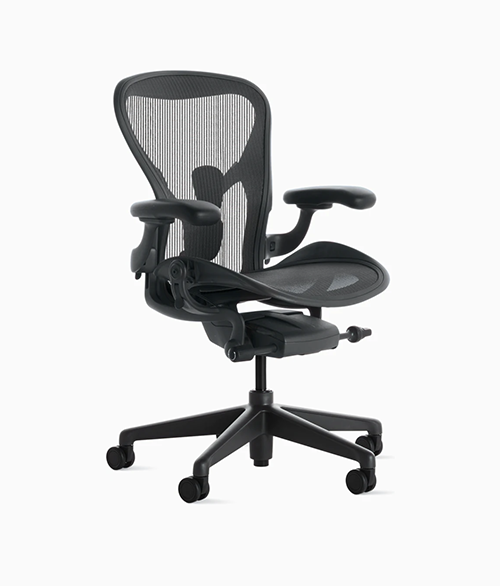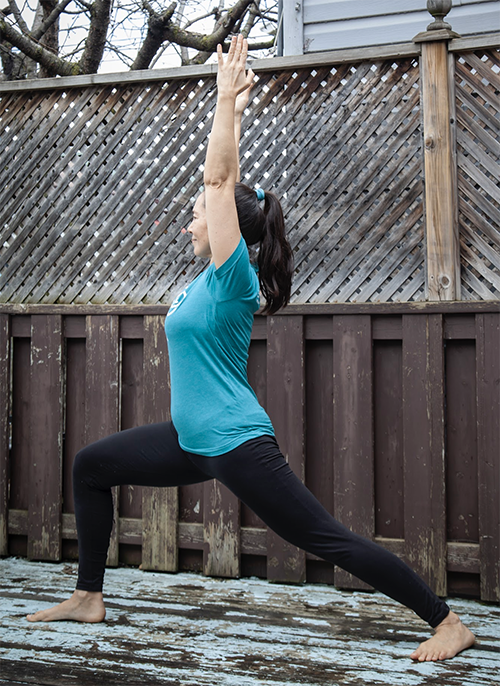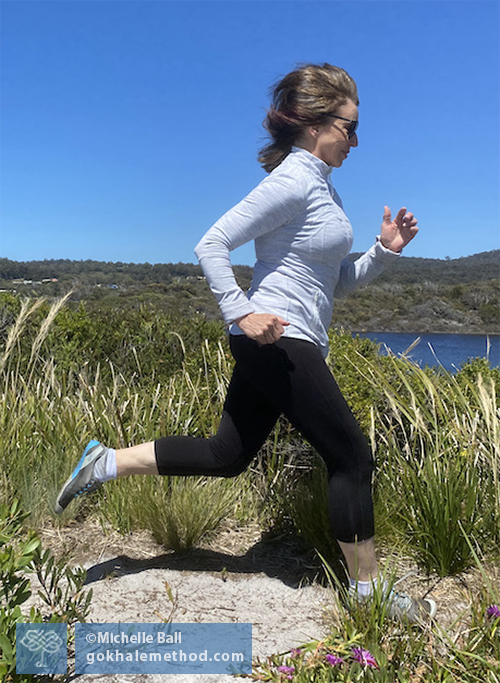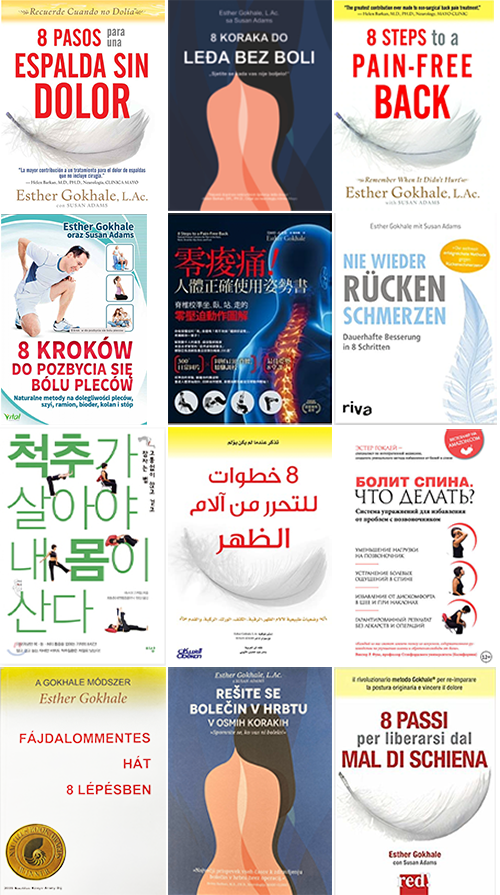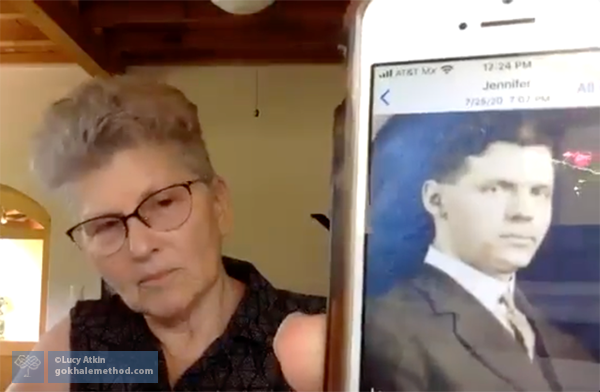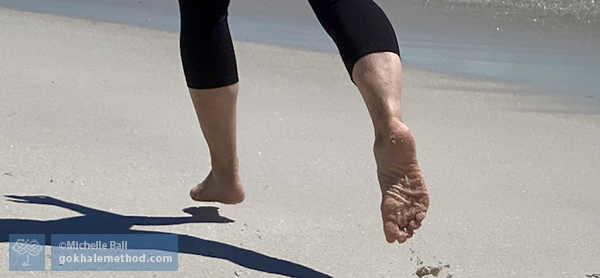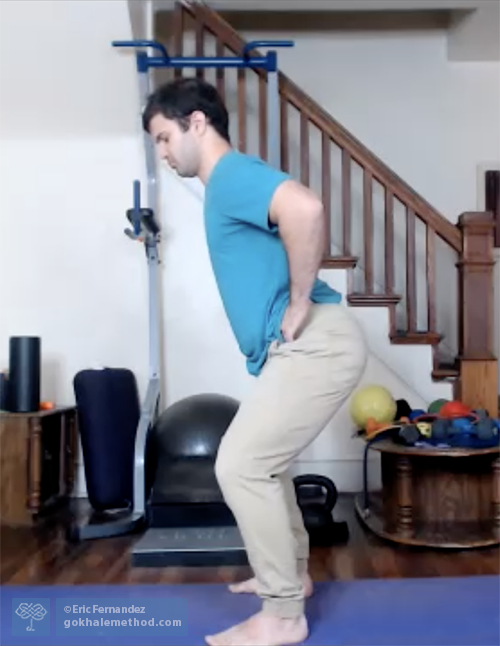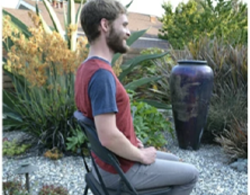I frequently get questions about what makes a good office chair. Of course, some office chairs are primarily fashioned for style and aesthetic appeal. In general, I would say these may be easy on the eye, but over time are hard on the body!
Ergonomic chairs
People frequently ask my opinion on how various ergonomic chairs on the market might help them. This makes sense given the rising prevalence of back pain¹. “Ergonomic” means that something is designed primarily for the health, comfort, and protection of users. Among the specific chairs people ask me about, the Herman Miller Aeron Chair tops the list. To answer efficiently, I like to compare and contrast it with the chair I designed, the Gokhale Method Pain-Free™ chair, as this embodies the posture principles confirmed by my research and experience.
Get Updates on the Latest Blog Posts
This blog post explains how some common yoga injuries occur and how applying the principles of healthy posture to yoga postures replaces this scenario with movements that are good for your body.
Yoga postures and back pain
Growing up in Mumbai, India, my Dutch mother was a student of BKS Iyengar and the Satyananda yogis, and keen for me also to learn yoga asanas, or postures. I practiced, and, being reasonably athletic as a child and already trained in Indian classical dance (Bharata Natyam), did not find it particularly difficult to choreograph the back bends, forward bends, and twists that were asked of me. I became a yoga model, demonstrating postures alongside visiting swamis’ presentations to induce the audience to sign up for upcoming yoga courses.
Welcome to the third blog post in our series on running. My name is Michelle Ball, and I am a Gokhale Method® teacher in Tasmania. I am a lifelong runner and am passionate about sharing my experience with beginners as well as seasoned runners and everyone in between. Even if you don’t run, but do wear shoes, this blog post is for you!
Active feet come first
When it comes to advice about running, our feet often get sidelined by the subject of shoes. If you missed Part 2, which is about how to build healthy, active feet, we recommend you catch up here.
It has been 14 years since my book 8 Steps to a Pain-Free Back came out in hard copy. For years I had wished I had a book to send to those people who called me from the East Coast or Midwest. These were often relatives or friends of people I had worked with in California, who were suffering terrible back pain and needed help. And so I got writing.
A book to solve back pain
Although there was clearly a huge need for a book to solve back pain, I was still surprised to find I had written a bestseller. It reached number two on Amazon.com following our American Public Television program in 2011, and number three following the New York Times article (paywall) naming me “The Posture Guru of Silicon Valley” in 2013. It has now been published in 12 languages (Croatian later this year), and sold over 250,000 copies.
This is the fourth blog post in our series on old family portraits and photographs. Previously we have looked at how antique images can inspire us to improve our posture in the Upper Body, Lower Body, and Small Bends. Here we are going to focus on how old family photos from abroad make a special contribution to our posture knowledge.
Photographs as historical evidence
Antique photographs are often notable for the healthy posture they capture. Even images taken well into the twentieth century are likely to show healthier posture than we see around us today.
In the US you have to go back several generations to reliably find images of healthy posture, and usually even to a time when photography was not widely available due to its elaborate processes and cost. Had the first immigrants to North America settled later, we would have much more photographic evidence of their intact posture. As it is, we have rare but valuable examples from the 1840s onward.
ALL OF ME
In December 2020 I received an email from Gokhale Method® offering a five-day trial period of exercise classes and dance parties with posture lessons. Every day for five days! I was thrilled to receive this email and joined on January 1st. From day one I knew I had found something very special.
Before the COVID-19 pandemic, I swam to stave off the pain I felt in my back and hips. But when the virus struck I wasn’t able to swim. Eventually my back pain returned to being constant. This showed me that being dependent on an external circumstance, swimming in this case, to feel good, could not give me everything that I needed to heal.
Welcome to the second blog post in our series on running. This series is designed to be useful to beginners and would-be beginners, as well as seasoned runners and everyone in between. If you missed Part 1, you can catch up here.
Reactivate your feet
When it comes to advice about running, the feet often get overlooked as the subject immediately turns to shoes. While shoes are an important subject (spoiler alert! Part 3 is about shoes), I prefer to start with that miracle of bioengineering that actually does the work—your feet.
Our feet become very passive from walking on flat, featureless surfaces rather than natural, more undulating terrain. They are also constrained, misshapen and deconditioned by less-than-ideal footwear, which, sadly, includes many running shoes on the market.
In this blog post, the fifth in our series scrutinizing popular home exercises, we are looking at squats. Is it a beneficial exercise, and how does it stack up—or not—against the principles of healthy posture?
Squats are a popular and effective exercise designed primarily to strengthen the front of thigh muscles (quadriceps), stabilize the knee joint, tone the butt (gluteus maximus), and also work the back muscles.
This blog post is about sitting with a backrest, which could be the back part of a chair, or something added to the chair for additional support and comfort.
Support and relief
Virtually any backrest will give relief that a tired back will appreciate. Support is certainly preferable when we sit for longer periods of time to enjoy reading, TV, a movie, or, if we are lucky, live theater.
With the trunk slightly inclined against a backrest, there is less compressive force due to gravity acting on the spine. In addition, the trunk stabilizer muscles get a break. When we are driving or traveling by plane or train, a backrest also confers additional protection from vibration or any untoward impact.

